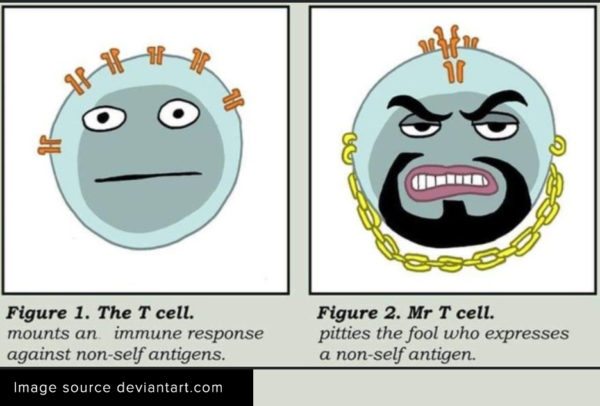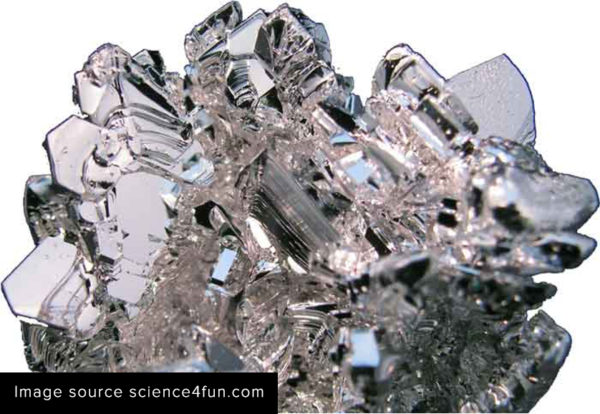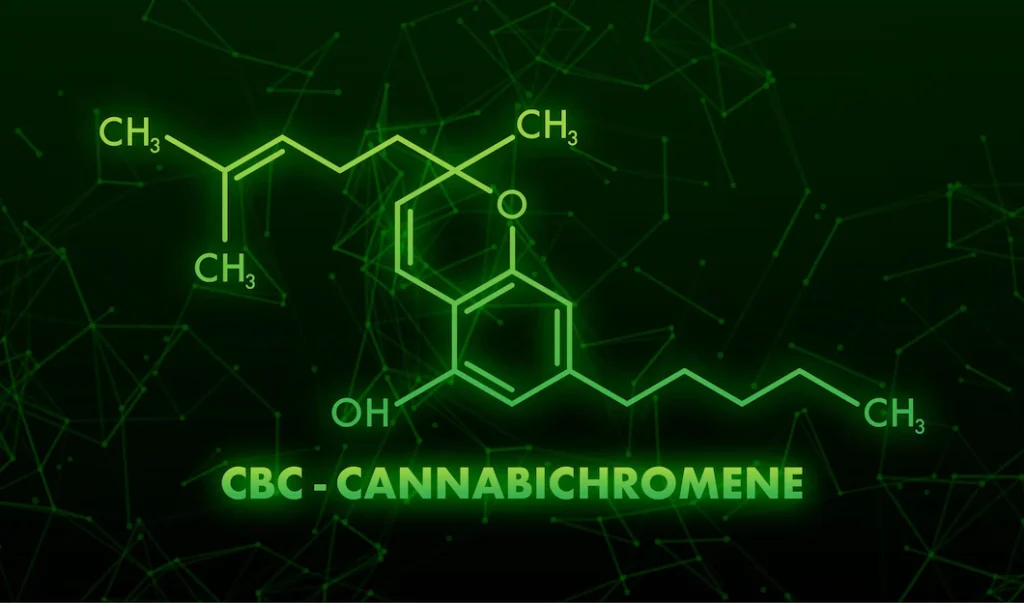
Essential Minerals: A symphony of wellness for the body
September 30, 2020

Our recent posts have covered the history of, and nutritional support, given to our bodies by vitamins (A, D, K, C, and B12) and important compounds like glutathione. But what about the minerals we hear so much about? This week’s post is covering the supportive benefits we receive from two natural and essential minerals—Zinc and Magnesium.
Essential minerals—What are they?
Essential minerals, along with vitamins, are considered essential because they act in concert with one another. Imagine a symphony of minerals: calcium, phosphorus, sodium, potassium, iron, copper, iodine, zinc and magnesium. They each play a role, like the instruments in an orchestra. A lone violinist is powerful, like a single mineral, but when supported by the others in the group, the effects are elevated. Today we are highlighting two essential minerals, zinc and magnesium, and discovering how these two soloist minerals contribute to the whole symphony of wellness in our bodies.
Zinc through the ages
Humans have known about zinc since before 20 BC. The Greeks and Romans were known to make artifacts from zinc and a sheet of zinc was even found in Athens dating from 300BC. The Chinese also first used zinc as early as 1637 AD and it was mined and smelted in India as early as the 9th century. In its early history zinc was first used to make brass, which is an alloy metal made from copper and zinc. Oddly enough, zinc wasn’t officially “discovered” until the 18th century when German chemist Andreas Marggraf was able to isolate zinc by heating carbon and calamine (the compound in calamine lotion used for bug bites). He documented his experiments in great detail and published a book about his discovery.1 His publication earned him the credit for discovering zinc even though several other Europeans had accomplished the feat years earlier.

Why do we need zinc?
Zinc is not only an element on the periodic table, it’s also a mineral we can’t live without. Our bodies need zinc to keep our enzymes and immune system functioning but since we don’t naturally produce it, we must get zinc through our food and supplements. Zinc is also responsible for facilitating the activity of over 300 enzymes that aid in our digestion, metabolism, nerve function, and more!2 Obtaining zinc from our diet or taking supplements is efficiently utilized by our bodies which is evidenced by the fact that it is the second most abundant trace mineral, after iron, found in our bodies3 and it is present in every cell!4 This essential mineral is fundamental to skin health*, DNA synthesis, and protein production. The healthy growth and division of cells*5 also relies on zinc to support proper development.
Scientists have conducted several studies on the benefits of zinc and how it supports the body. A three-month study in 2001, demonstrated how zinc reduced facial blemish levels in the 332 participants,6 which led to more zinc–oil gland studies in 2010 and 2018 that supported the link between zinc and the issues people experience with over-productive oil glands. Zinc is also known to support our immune system by stimulating particular immune cells, called T-cells, to protect us from infection.7

Several other studies, in a 2017 review, have demonstrated that zinc may reduce the duration of the common cold by up to 33%*8. It’s for this reason that we see the sales of zinc lozenges or nasal sprays increase during certain times of the year. Several studies have also demonstrated that zinc supplements support those with age-related eye problems by mobilizing vitamin A to the eye.8
Do you get enough zinc?
As we mentioned above, we don’t make zinc. We also don’t store it. So, we need a constant supply of zinc which means we can only get zinc through food and supplements. When choosing a zinc supplement, it is important to note that dietary supplements can contain several forms of zinc, including zinc gluconate, zinc sulfate and zinc acetate, according to the National Institute of Health (NIH).9 This is vital information because what you really need to know is how much elemental zinc is in your dietary supplement. Elemental zinc refers to the actual amount of zinc found in a supplement. Dietary supplement regulations are very strict about how an ingredient must be listed on a label. For example, according to the NIH, “approximately 23% of zinc sulfate consists of elemental zinc; thus, 220mg of zinc sulfate contains 50mg of elemental zinc.” As a consumer, you will see the name of the form of zinc and then the amount of elemental zinc in that form in milligrams, like so: Zinc (as zinc sulfate) and 50mg under “amount per serving.”
It is also crucial that we eat the right foods, or enhance our nutrition with supplements, to remain in optimal health. Some foods that contain adequate levels of zinc include:
- Oysters (contain more zinc than any other food source)
- Red meat
- Poultry (chicken or turkey)
- Beans, legumes, seeds, and nuts
- Shellfish(crab, shrimp, mussels, and lobster)
- Fortified whole grains, cereals, and dairy products

There is evidence to suggest that a lack of adequate zinc in your diet may lead to a reduction in your senses of taste or smell.11 Zinc is also crucial for cell membrane health and the transfer of electrolytes across the membrane, especially in the small and large intestines. When electrolytes are out of balance, you can experience hair loss, digestive issues, eye and skin problems, fatigue, fast heart rate, nausea and vomiting, and loss of appetite. As you can see, zinc is essential!
All about magnesium
Magnesium was first discovered by the Greeks outside the city of Magnesia (go figure!). It was used in ancient times as a curative in the form of laxatives and salts; by the 1600s, water from the famous Epsom spring, located in England, was a popular therapy. Magnesium sulfate was isolated from the Epsom spring water by Nehemiah Grew, an English botanist, in 1695 and has been used therapeutically ever since. Later in 1808, magnesium was isolated by Sir Humphry Davy, an English chemist, while he experimented upon several earth metals.

Magnesium is the nineth-most abundant element in the universe12, according to the U.S. Geological Survey. On Earth, magnesium is found both in the crust13 and in the mantle; it’s also the third-most abundant mineral dissolved in seawater, which is where we get most of our magnesium today.

Magnesium and the body
Magnesium is important for many processes in the body, and like zinc, is not naturally produced by the body. It is necessary for over 300 biochemical reactions, including regulating muscle and nerve function,* maintaining blood sugar levels and blood pressure,* supporting a healthy immune system, regulating the heartbeat, and making protein, bone, and DNA. There are about five teaspoons of magnesium in the human body,14 which is the fourth-most abundant mineral in the body,15 and every cell needs magnesium to function. Magnesium plays a supportive role as a “helper molecule” in the biochemical reactions performed by enzymes that help support energy creation*, protein formation*, gene maintenance*, and proper muscle movement*. Magnesium also plays a part in supporting overall emotional balance*, circulatory health*, and a healthy, functioning metabolism.*
We absorb magnesium through our small intestines as early as an hour after ingesting it. However, the average diet barely contains 50% of the recommended daily amount (RDA) of magnesium.16 Lacking an acceptable amount of magnesium has been associated with several health issues, so how can we ensure that we get enough magnesium? Let’s check your diet first. Are you eating foods like nuts, legumes, tofu, seeds, whole grains, fish, bananas, or even dark chocolate? Avocados and leafy greens, like spinach are also great sources of magnesium. Nuts, including almonds, cashews, and Brazil nuts are delicious sources high in magnesium. A one ounce serving of cashews contains 82mg of magnesium! And just two Brazil nuts provide more than 100% RDA for magnesium.17 Flax, pumpkin, and chia seeds are another great source of magnesium with pumpkin seeds topping out with a whopping 37% of RDA in a one ounce serving.18

Dietary supplements are another excellent source of magnesium and there are many forms of magnesium supplements available to consumers, so how do you know which type of magnesium is right for you? For example, magnesium oxide and water are combined to create magnesium hydroxide, which is found in products like Phillips® Milk of Magnesia to help relieve digestive upset. Because these forms of magnesium are not very bioavailable, we lose some of the effectiveness, which is why the serving size suggested is so high. However, magnesium gluconate and magnesium glycinate have the highest absorption rates19 of the different forms of magnesium, offering increased bioavailability to help support our health and wellness. Magnesium gluconate is classified as a salt and is known to be better absorbed and cause less digestive upset than other forms of magnesium. It has also displayed promising results surrounding pregnancy issues. Magnesium gluconate also helps maintain the electrical properties of cell membranes20, determining what is allowed to cross the membrane and what isn’t. The other high-absorbing magnesium, magnesium glycinate, is known for helping to promote better sleep,*21 but details of how are still not understood. Studies on sleep and magnesium glycinate demonstrate that it may help regulate circadian rhythms, thus potentially improving the quality of sleep. Again, more studies are needed to further this line of inquiry. The most important factor to remember is absorption; our bodies only use what they can absorb.
The importance of incorporating zinc and magnesium into our diets via food or supplements cannot be overlooked. The minerals, along with the vitamins A, D, K , C, B12, and nutrients like glutathione, are integral to our overall wellness, supporting our bodies with everything they need to stay healthy. Remember, a whole symphony of minerals and vitamins ensures our optimal health and wellness, just as hearing a whole symphony performed by an expert orchestra is music to our ears!
Join us next week for a deep dive into the microbiome and why everyone is talking about probiotics!
1 Marggraf, A. (1746). Histoire de l’Académie royale des sciences et belles-lettres de Berlin. A Berlin, Germany: Chez Haude et Spener, libraires. Retrieved September 4, 2020, from https://books.google.com/books?id=0w8_AAAAYAAJ&pg=PA49#v=onepageqf=false
2 Zastrow ML, Pecoraro VL. Designing hydrolytic zinc metalloenzymes. Biochemistry. 2014;53(6):957-978. doi:10.1021/bi4016617
3 Saper, R. B., & Rash, R. (2009). Zinc: an essential micronutrient. American family physician, 79(9), 768–772.
4 Lim, K. H., Riddell, L. J., Nowson, C. A., Booth, A. O., & Szymlek-Gay, E. A. (2013). Iron and zinc nutrition in the economically-developed world: a review. Nutrients, 5(8), 3184–3211. https://doi.org/10.3390/nu5083184
5 Liu, E., Pimpin, L., Shulkin, M., Kranz, S., Duggan, C. P., Mozaffarian, D., & Fawzi, W. W. (2018). Effect of Zinc Supplementation on Growth Outcomes in Children under 5 Years of Age. Nutrients, 10(3), 377. https://doi.org/10.3390/nu10030377
6 Dreno B, Moyse D, Alirezai M, et al. Multicenter randomized comparative double-blind controlled clinical trial of the safety and efficacy of zinc gluconate versus minocycline hydrochloride in the treatment of inflammatory acne vulgaris. Dermatology. 2001;203(2):135-140.
7 Haase, H., & Rink, L. (2009). The immune system and the impact of zinc during aging. Immunity & ageing : I & A, 6, 9. https://doi.org/10.1186/1742-4933-6-9
8 Hemilä H. Zinc lozenges and the common cold: a meta-analysis comparing zinc acetate and zinc gluconate, and the role of zinc dosage. JRSM Open. 2017;8(5):2054270417694291. Published 2017 May 2. doi:10.1177/2054270417694291
9 Lassi ZS, Moin A, Bhutta ZA. Zinc supplementation for the prevention of pneumonia in children aged 2 months to 59 months. Cochrane Database of Systematic Reviews 2016, Issue 12. Art. No.: CD005978. DOI: 10.1002/14651858.CD005978.pub3
10 United States, U.S. Department of Health & Human Services, National Institute of Health. (2020, July 15). Zinc. Retrieved September 23, 2020, from https://ods.od.nih.gov/factsheets/Zinc-HealthProfessional/
11 Lyckholm, L., Heddinger, S. P., Parker, G., Coyne, P. J., Ramakrishnan, V., Smith, T. J., & Henkin, R. I. (2012). A randomized, placebo controlled trial of oral zinc for chemotherapy-related taste and smell disorders. Journal of pain & palliative care pharmacotherapy, 26(2), 111–114. https://doi.org/10.3109/15360288.2012.676618
12 Ash, R. The Top 10 of Everything 2006: The Ultimate Book of Lists. DK Publishing; 2005. Available at: https://www.librarything.com/work/3367109. Accessed November 4, 2009.
13 Railsback, LB. Some Fundamentals of Mineralogy and Geochemistry. Department of Geology, University of Georgia. Available at: http://www.gly.uga.edu/railsback/Fundamentals/ElementalAbundanceTableP.pdf. Accessed November 4, 2009.
14 Dean C. The Magnesium Miracle. New York: Ballantine Books; 2007.
15 Arnaud M. Update on the assessment of magnesium status. The British Journal Of Nutrition. June 2008;99 Suppl 3:S24-S36. Available from: MEDLINE with Full Text, Ipswich, MA. Accessed February 3, 2010.
16 Institute of Medicine. Dietary Reference Intakes for Calcium, Phosphorous, Magnesium, Vitamin D, and Fluoride. Washington, DC: National Academy Press; 1997.
17 Thomson CD, Chisholm A, McLachlan SK, Campbell JM. Brazil nuts: an effective way to improve selenium status. Am J Clin Nutr. 2008;87(2):379-384. doi:10.1093/ajcn/87.2.379
18 https://nutritiondata.self.com/facts/nut-and-seed-products/3066/2
19 Coudray C, Rambeau M, Feillet-Coudray C, et al. Study of magnesium bioavailability from ten organic and inorganic Mg salts in Mg-depleted rats using a stable isotope approach. Magnes Res. 2005;18(4):215-223.
20 Wishart DS, Knox C, Guo AC, Shrivastava S, Hassanali M, Stothard P, Chang Z, Woolsey J. DrugBank: a comprehensive resource for in silico drug discovery and exploration. Nucleic Acids Res. 2006 Jan 1;34(Database issue):D668-72.
21 Kawai, N., Sakai, N., Okuro, M., Karakawa, S., Tsuneyoshi, Y., Kawasaki, N., Takeda, T., Bannai, M., & Nishino, S. (2015). The sleep-promoting and hypothermic effects of glycine are mediated by NMDA receptors in the suprachiasmatic nucleus. Neuropsychopharmacology : official publication of the American College of Neuropsychopharmacology, 40(6), 1405–1416. https://doi.org/10.1038/npp.2014.326
About Zilis’ Scientific Research & Development Department
Our Scientific Research and Development Department is headed up by Dr. Marielle Weintraub, a hemp industry expert. She holds a master’s and a PhD in Behavioral Neuroscience and is very active in many dietary supplement and hemp industry trade associations, including her role as the current President of the U.S. Hemp Authority. Dr. Weintraub is committed to the continued development of hemp-specific information and testing to fulfill the Zilis mission.
Science posts for Discover are co-researched and co-written by Kelly McGill, Senior Scientific Technical Writer at Zilis. Kelly holds a bachelor’s degree in English and a master’s in Linguistics / TESL. She has been writing science-related content for over 20 years and is an expert in making difficult concepts easy to understand.
Zilis is the creator of UltraCell™, a CBD oil product derived from hemp. Based in Argyle, Texas, a suburb of Dallas-Fort Worth, Zilis is privately held. Visit zilis.com for more information.
SHARE THIS POST
ABOUT THIS BLOG
Discover : The blog with the lifestyle, nutrition, science, and history of the hemp industry.
It’s your go-to for the most up-to-date information on hemp, CBD, dietary supplements, and more! Check it out!







